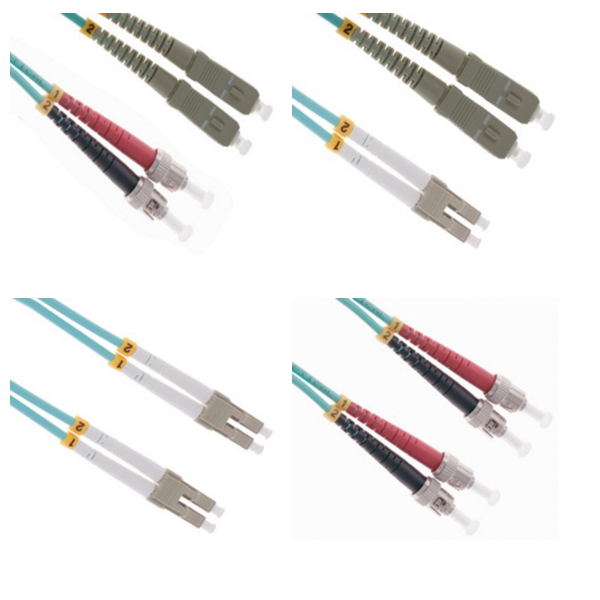Fiber Optic Cable Assemblies

Fiber optic cable assemblies are sets of fiber optic cables that have connectors pre-installed on them. This way, installers only need to connect the assemblies and not be concerned with the compatibility of their handiwork. Fiber cable assemblies cater both to singlemode and multimode use. Singlemode assemblies tend to be employed in long distance and high yields of bandwidth. On the other hand, multimode is used for both short distance and lower bandwidth that is similar to the amount of data you can pass through a regular 1-gigabit ethernet cable.
Fiber optic cable assemblies rely absolutely on connectors. More specifically and to speak in terms that seem to have gained some popularity, we often hear it said that LC or MT connectors (among others, surely) are used in fiber optic assemblies. Each connector is the subject of much testing for a whole slew of parameters meant to ensure that they exhibit the performance expected of them.
FAQs
What is the fiber type utilized in fiber cables that create a cable assembly?
The fiber type utilized in fiber cables that create a cable assembly is typically either single-mode fiber (SMF) for long-distance and high-bandwidth applications or multi-mode fiber (MMF) for shorter distances and multiple light paths.
What is meant by "riser rated" and "plenum rated"?
"Riser rated" refers to cables designed for vertical runs between floors in non-plenum areas, providing flame resistance and low smoke production, while "plenum rated" refers to cables intended for use in air handling spaces, offering higher fire resistance and low smoke emission to prevent the spread of flames and toxic fumes.
Industrial Wire Types: Part 2
Twisted Pair Wire
Twisted pair wire is most commonly seen in scenarios where data is being transfer to and from certain locations. It uses two separate conductors, twisted together, for a single circuit. The two conductors are twisted together to reduce electromagnetic interference or “cross talk” between the two wires. It is common to use twisted pairs in place of a coax cable for data transfer. Coax can be fairly expensive and can be more difficult to run whereas twisted wire is not as thick or rigid and can easily be maneuvered in tough to reach locations. Twisted wire will always come in pairs, but there are no limits to how many pairs can be included in a single cable. For instance, CAT5 or CAT6 cable, which is commonly used in home and office networks, uses twisted pair wire. This type of cable has four different pairs of communication lines.
Shielded Wire
Shielded wire is different from regular wire insulation in that it is made of a conductive material. This conductive material includes, braided strands of copper (or other types of metal), non-braided aluminum and copper tape. The purpose of this shielding is to protect the signal passing through the wire from any outside interference. Unlike twisted cable, which is trying to eliminate interference among wire being used in the same circuit, shielded wire needs protection from outside interference and from other electrical circuits in the area.
Tray Cable
Tray Cable is a factory assembly of two or more insulated conductors, with or without associated bare or covered grounding conductors under a nonmetallic sheath, for installation in cable trays, in raceways, or where supported by a messenger wire. It is common to see tray cable that has many different conductors that can be used for control wiring, instrumentation and signal wiring as well as many other applications. Tray cable is often rated for use in direct sunlight applications, as well as direct burial applications. Because of the potential weight of tray cable when suspended, it will need to be supported properly to avoid hazardous environments.

